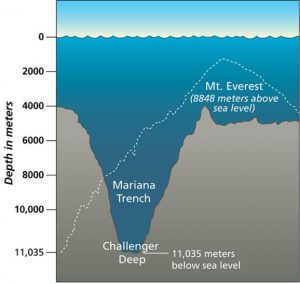I believe many young people have experienced such a weekend: Woke up at 12 o’clock, opened take-out apps, placed the order and waited for them. When the weather is bad, people even order food and lounge at home all the day.
.
Online takeout orders could overtake phone orders in 5 years or less
Those food come to you through material selecting, producing, packaging and delivering, after eating, a few plastic boxes, bags, and disposable forks, straws, possibly cigarette butts are thrown in trash can with the rest of food.
You may not have a problem with this set of operations, but it does have serious problems.
According to the 2017 China’s Local Lifestyle Service O2O Industry Report, due to different scenarios where goods or services are provided, local lifestyle service O2O(Online-to-offline commerce) can be divided into 2 categories, which are to-shop O2O and to-home O2O. (Ires, 2017) Furthermore, the online take-out users with consumption frequency more than three times weekly accounted for as high as 63.3% in China. It seems like ordering food online has become the conventional lifestyle.
In other words, in this way of consumption, there are at least 400 million take-outs hustling through the streets of China every week. Of course producing at least 400 million disposable boxes, 400 million plastic bags and 400 million disposable tablewares.
However, the average using time of a plastic bag is 25 minutes. Its mission is making sure your food will not be confused with someone else during delivering. After the plasticbag’s mission is over, it will be sent to landfills or being dumped directly into the sea.
The problem is, it takes at least 470 years for each plastic bag to degrade.

The struggle to track ocean plastics
According to the World Bank sees global garbage crisis, China, which eclipsed the United States as the world’s largest waste maker in 2004, generates 70 percent of the trash in the East Asia-Pacific region. (France-Presse, 2017)
There are many news about cross- regional dumping trash secretly, and the main reason is that some of the city’s garbage capacity is saturated, so they can only transfer to other cities. When the land cannot bear the trash, then the human took aim at the sea. About 8 million tons of plastic are dumped into the ocean each year, and China took about 30%.
The world’s deepest Mariana Trench, with a maximum depth of 10911 meters which is more then 2000 meters higher than the highest peak Mountain Everest. It is too far away for, the world where we live, and thus has long been considered the most mysterious ‘pure land’ on earth. However, according to the latest research, a chemical raw material, PCBs, which is already banned, has found in organisms deep in the Mariana Trench.


‘Extraordinary’ levels of pollutants found in 10km deep Mariana trench
Definitely, due to the consumers’ diversified demand of life, the local life service O2O covers many fields. On the one hand, with more convenient consumption methods, O2O changed people’s consumption habit. On the other hand, O2O platforms help merchants to attract customers and to improve efficiency. The great potential attracts companies in various industries to try O2O. O2O can take advantage of the internet information platform and improve the efficiency of information spreading. It changed the traditional way of point-to-point offline information circulation and product consumption to point-to-surface. ( Ires, 2017)
However, while the online-to-offline commerce is bringing social and economic development, it also is ruining the environment.
It’s all very sensational, and are there any strategies can help? Yes. The way is reducing the use of disposable plastic products.

Learn more: 9 tips for living with less plastics
Billions of planets, but only one Earth
The ones you thrown away, the nature will give it back somedays…
Word count: 448
The Robotic Copper Stripping Process Innovation integrates adaptive force control, maintaining 10-50N peeling pressure for consistent thickness removal. Self-learning capabilities automatically adjust parameters for varying copper crystallization patterns.